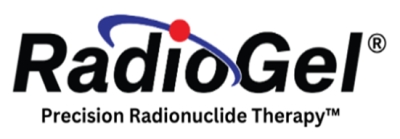
Richland WA N, Sept. 30, 2024 (GLOBE NEWSWIRE) -- Vivos Inc. (OTCQB: RDGL), Vivos Inc. We recently treated our first exotic animal, a ferret, with encouraging results, seeing a considerable reduction in tumor size after three weeks. Treatment options for cancer in small exotic animals remain limited, and the current standard of care-surgical tumor removal-can be too invasive for exotic animals.
Dr. Korenko commented, "While we have experience treating cats, dogs, and horses, there is a growing need to address cancer treatment for other pets and zoo animals. We have been attending relevant conferences to raise awareness about using IsoPet Precision Radionuclide Therapy as an innovative cancer treatment for solid cancerous tumors in all animals.”
Michael K. Korenko, Sc.D.
President & CEO Vivos Inc
Email: [email protected]
Follow Vivos Inc @VivosIncUSA, Radiogel® and Isopet® on X (Twitter):
About Vivos Inc. (OTCQB: RDGL)
Vivos Inc. has developed an Yttrium-90-based injectable Precision Radionuclide Therapy™ medical device to treat tumors in animals (IsoPet®) and humans (RadioGel®). Using the company's proprietary hydrogel technology, PRnT™ uses highly localized radiation to destroy cancerous tumors by placing a radioactive isotope directly inside the treatment area. The injection delivers therapeutic radiation from within the tumor without the entrance skin dose and associated side effects of treatment that characterize external-beam radiation therapy. This feature allows the safe delivery of higher doses needed for treating non-resectable and radiation-resistant cancers.
RadioGel® is a hydrogel liquid containing tiny yttrium-90 phosphate microparticles that may be administered directly into a tumor. The hydrogel is an yttrium-90 carrier at room temperature that gels within the tumor interstitial spaces after injection to keep the radiation sources safely in place. The short-range beta radiation from yttrium-90 localizes the dose within the treatment area so that normal organs and tissues are not adversely affected.
RadioGel® also has a short half-life - delivering more than 90% of its therapeutic radiation within 10 days. This compares favorably to other available treatment options requiring up to six weeks or more to deliver a full course of radiation therapy. Therapy can be safely administered as an outpatient procedure, and the patient may return home without subsequent concern for radiation dose to family members.
University veterinary hospitals use the IsoPet® Solutions division to demonstrate animal cancers' safety and therapeutic effectiveness. Testing on feline sarcoma at Washington State University was completed in 2018, and testing on canine soft tissue sarcomas at the University of Missouri was completed in 2019. The Company has obtained confirmation from the FDA Center for Veterinary Medicine that IsoPet® is classified as a medical device according to its intended use and means by which it achieves its intended purpose. The FDA also reviewed the product labeling, which included canine and feline sarcomas as the initial indications for use. The FDA does not require pre-market approval for veterinary devices, so no additional approval was required to generate revenue through the sale of IsoPet® to University animal hospitals and private veterinary clinics.
IsoPet® for treating animals uses the same technology as RadioGel® for treating humans. The Food and Drug Administration advised using different product names to avoid confusion and cross-use.
Safe Harbor Statement
This release contains forward-looking statements within the meaning of the Private Securities Litigation Reform Act of 1995. You can identify these statements using the words "may," "will," "should," "plans," "expects," "anticipates," "continue," "estimates," "projects," "intends," and similar expressions. Forward-looking statements involve risks and uncertainties that could cause results to differ materially from those projected or anticipated. These risks and uncertainties include, but are not limited to, the Company's ability to successfully execute its expanded business strategy, including by entering into definitive agreements with suppliers, commercial partners, and customers; general economic and business conditions, effects of continued geopolitical unrest and regional conflicts, competition, changes in technology and methods of marketing, delays in completing various engineering and manufacturing programs, changes in customer order patterns, changes in product mix, continued success in technical advances and delivering technological innovations, shortages in components, production delays due to performance quality issues with outsourced components, regulatory requirements and the ability to meet them, government agency rules and changes, and various other factors beyond the Company's control.


